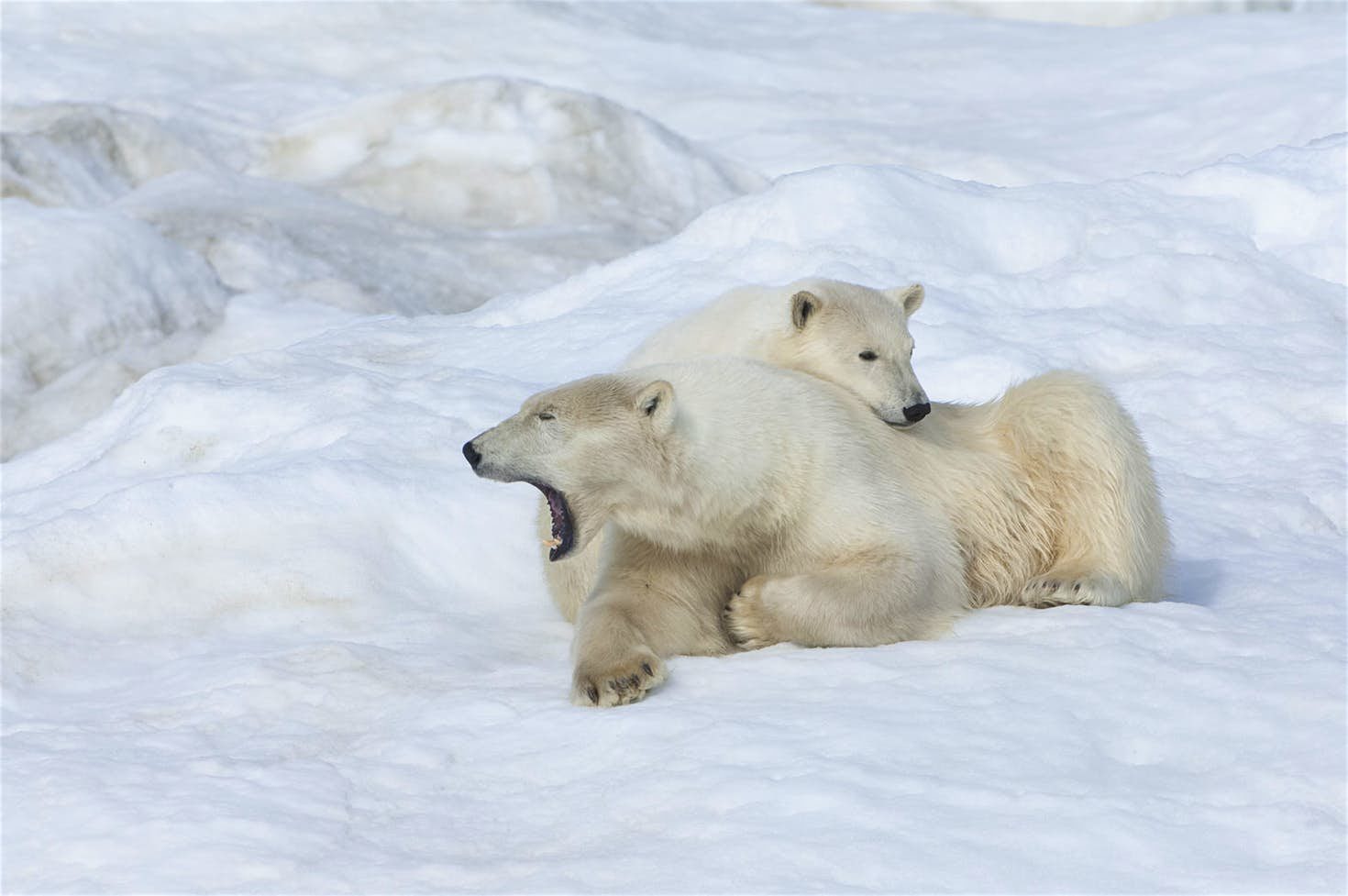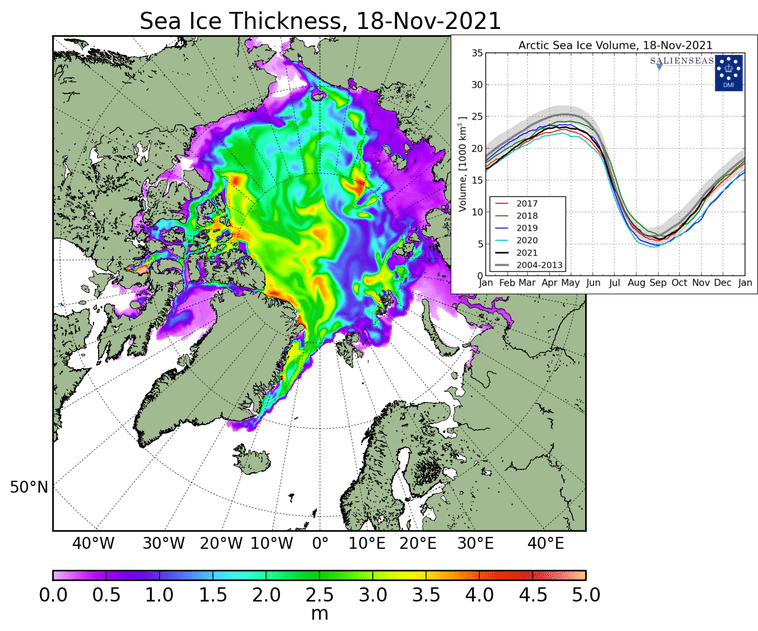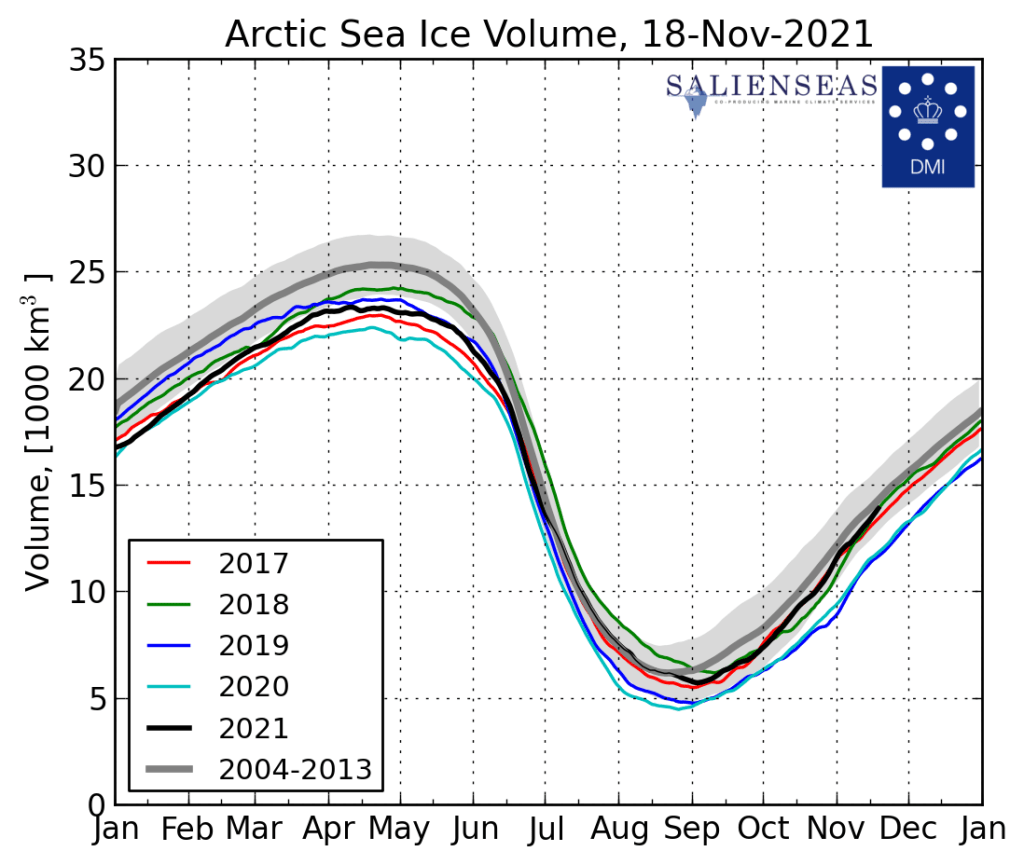I'm being consciously naive here. I'm fully aware that the media's job isn't to inform; rather, it exists to propagandize and to push the agendas and narratives of its backers. Still, I can't help but wonder, when a placard-brandishing climate alarmist yells "the end is nigh!", who exactly is it that they've put their trust in? Who told them that the sky is falling? I ask because you do need to be informed of the 'climate crisis' in order to discern it — your own senses aren't enough. People aren't opening their front doors in the morning to an 'existential emergency', they aren't retreating back inside, calling their bosses and saying "I wont be coming in today, you know... 'cause of the climate". This is supposed to be 'catastrophic global warming', remember? Not 'random, cherry-picked extreme weather events'? For what is billed as a 'worldly cataclysm', this warming sure is illusive, periodic and localized.
The power of propaganda, I guess.
The blind acceptance of sheep.
ARCTIC SEA ICE EXTENT IS CURRENTLY THE SECOND-HIGHEST IN 15 YEARS, AND GROWING
The poster child for AGW is of course the Arctic. For years, dire tipping point deadlines of an "ice free Arctic" have been prophesied by pedestalled climate 'experts', and for years, dire tipping point deadlines have uneventfully passed us all by.
See: Decades Of Failed Tipping Point Prophesies
And: Years Of Failed Arctic Sea Ice Predictions
In a further blow to the credibility of the climate ambulance chasers, there is, as of Nov 17, significantly more ice in the Arctic than there has been in recent years — the difference is stark.
This week, Arctic sea ice is approaching 10,000,000 km2 — the second highest ice extent of any of the last 15 years. Furthermore, the years 2008 and 2005 are on course to be eclipsed in the coming days/weeks, as are many from the early-2000s and mid/late-1990s — this means that 2021 will soon claim the title of 'the highest Arctic sea ice extent of the past two decades' (since 2001).
In addition, extent is now comfortably above the 2011-2020 average, and, by next week, is expected to have taken out the 2001-2010 average, too, according to NSIDC data.
Also worth noting is that 'extent' is actually highly variable and susceptible to changing wind patterns, etc. A more reliable metric to use when trying to determine the health of an ice sheet is its thickness or volume.
According to the latest data from the Danish Meteorological Institute (DMI), Arctic sea ice 'volume' has been on something of a tear in recent weeks — it is now tracking above all recent years (black line on the below chart), and shows no signs of abating:
Here's a closer look:
"Cold and snow came early to much of the Arctic this year," reports woodtv.com. This reality, as hinted at above, is a big shift from recent years, and I believe it could indicate a more permanent 'trend change' as low solar activity's impact on Earth's climate continues to 'snowball'.
Only time will tell on that front, but backing up my contention is the fact that the South Pole also just witnessed a historically cold winter. As reported last month: "Between the months of April and September, the South Pole averaged a temperature of -61.1C (-78F). Simply put, this was the region's coldest 6-month spell ever recorded, and it comfortably usurped the previous coldest 'coreless winter' on record: the -60.6C (-77F) from 1976 (solar minimum of weak cycle 20)."
Unsurprisingly, the mainstream media remains silent on all of this.
It doesn't fit the narrative, and so it isn't reported on — this isn't how journalism (and indeed science) is supposed to work.
In the absence of open debate, questioning and accountability, authoritarian forces rise.






Reader Comments
Crocs Sewage swimming floods in Gambia
[Link]
When the seasonal rains fall and the sewers can't cope the native big boys🐊🐊🐊 move in
[Link]
Expect to read and see reports of 🌧🌧🌧🌧🌧 and the flooding that follows.
🌩🌩🌩🌩🌩 The kind never witnessed before :jawdrop:
🌬🌬🌬🌬🌬 That will 🌪🌪🌪 drop from the skies, effecting 🏠 🌳 🍂🍂🍂
And of course, plenty of the White stuff 🌨🌨🌨🌨 ☃️
One thing I don't thankfully have to worry about is 🐊🐊🐊🐊🐊
*Now I just typed that the way I normally would (thoughts streaming through the keyboard as though they were spoken words) and then thought, "Oh, yeah, - I guess I can say this - his name was . . . Buddy!
**Poor old gator, like folks at home after Thanksgiving dinner, sitting back on his favorite perch, content, with a full stomach, watching 'Gator Wrasslin'. . and BAM!
RC
So I reckon I got off lucky, still got both my arms, and a stent to keep the old ticker ♥️ happy.
I believe every word you say Do not fret, karma can be good
2022 will be emotional.
Oh!! Do daily cup of SauerKraut. You can rince it even juice it, just dont throw the juice away
[Link]
[Link]
[Link]
[Link]
There seems to be a pandemic of propaganda!
I think we need an international ID scheme that clearly states what news outlets each person subscribes to. Nevermind a medical apartheid, what we need is a media apartheid. I don't want to be anywhere near those filthy, disgusting MSN'ners, spreading lies and spike proteins with every breath..
Great comments all!
R.C.
[Link]
they are not letting up...
Did you see these scumbags who tried to rob a delivery guy as he got home? Grace under pressure and delivered the hits. [Link] God damn, that bitch screaming 'Please don't shoot me (again)" just makes it all worthwhile.
RC